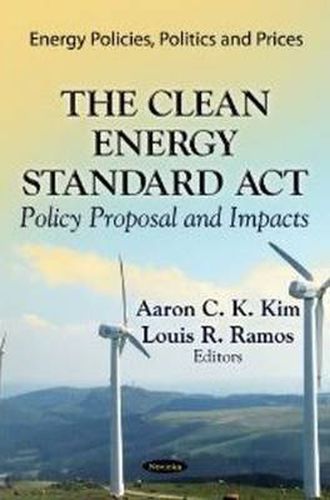Readings Newsletter
Become a Readings Member to make your shopping experience even easier.
Sign in or sign up for free!
You’re not far away from qualifying for FREE standard shipping within Australia
You’ve qualified for FREE standard shipping within Australia
The cart is loading…






U.S. policymakers have considered and deliberated on several policy designs that could potentially reduce energy-related carbon emissions. In his 2011 State of the Union address, President Obama proposed the concept of a Clean Energy Standard (CES) that would result in 80% of U.S. electricity generation from clean energy sources by 2035. In March of 2012, the Clean Energy Standard Act of 2012 (S.2146) was introduced in the Senate. The primary goal of S.2146 is to reduce carbon dioxide (CO2) emissions from the U.S. electricity sector, which represents approximately 41% of total U.S. CO2 emissions. Generally, the approach used to achieve this goal is to require certain utility companies to source a portion of their electricity generation from qualified clean energy generators. Utilities located in either Alaska or Hawaii are exempted from CES requirements. This book examines the policy proposals and impacts of the Clean Energy Standard Act with a focus on compliance requirements and clean energy credits.
$9.00 standard shipping within Australia
FREE standard shipping within Australia for orders over $100.00
Express & International shipping calculated at checkout
U.S. policymakers have considered and deliberated on several policy designs that could potentially reduce energy-related carbon emissions. In his 2011 State of the Union address, President Obama proposed the concept of a Clean Energy Standard (CES) that would result in 80% of U.S. electricity generation from clean energy sources by 2035. In March of 2012, the Clean Energy Standard Act of 2012 (S.2146) was introduced in the Senate. The primary goal of S.2146 is to reduce carbon dioxide (CO2) emissions from the U.S. electricity sector, which represents approximately 41% of total U.S. CO2 emissions. Generally, the approach used to achieve this goal is to require certain utility companies to source a portion of their electricity generation from qualified clean energy generators. Utilities located in either Alaska or Hawaii are exempted from CES requirements. This book examines the policy proposals and impacts of the Clean Energy Standard Act with a focus on compliance requirements and clean energy credits.